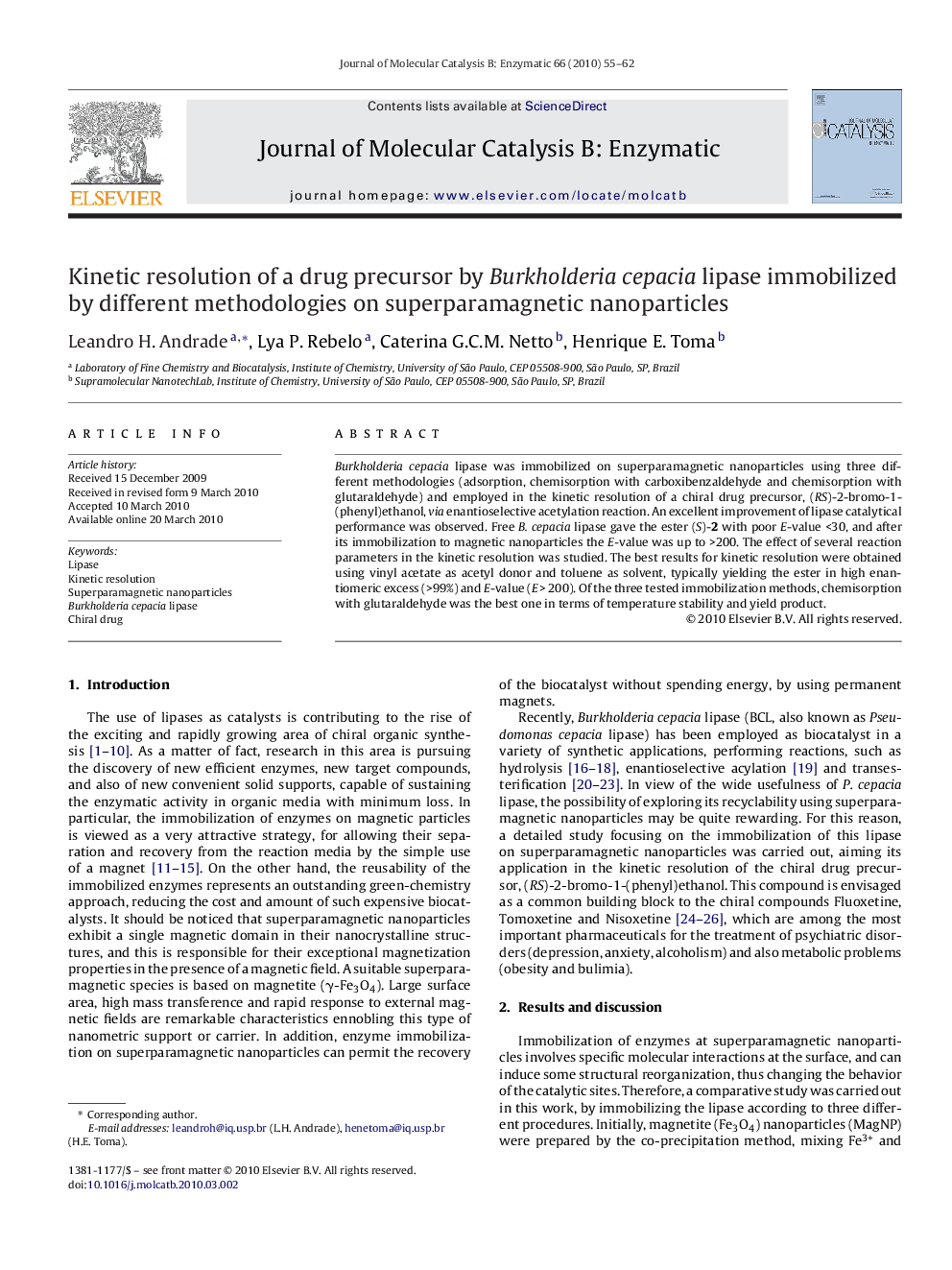| Article ID | Journal | Published Year | Pages | File Type |
|---|---|---|---|---|
| 70400 | Journal of Molecular Catalysis B: Enzymatic | 2010 | 8 Pages |
Burkholderia cepacia lipase was immobilized on superparamagnetic nanoparticles using three different methodologies (adsorption, chemisorption with carboxibenzaldehyde and chemisorption with glutaraldehyde) and employed in the kinetic resolution of a chiral drug precursor, (RS)-2-bromo-1-(phenyl)ethanol, via enantioselective acetylation reaction. An excellent improvement of lipase catalytical performance was observed. Free B. cepacia lipase gave the ester (S)-2 with poor E-value <30, and after its immobilization to magnetic nanoparticles the E-value was up to >200. The effect of several reaction parameters in the kinetic resolution was studied. The best results for kinetic resolution were obtained using vinyl acetate as acetyl donor and toluene as solvent, typically yielding the ester in high enantiomeric excess (>99%) and E-value (E > 200). Of the three tested immobilization methods, chemisorption with glutaraldehyde was the best one in terms of temperature stability and yield product.
